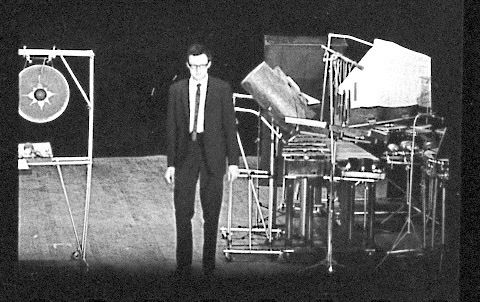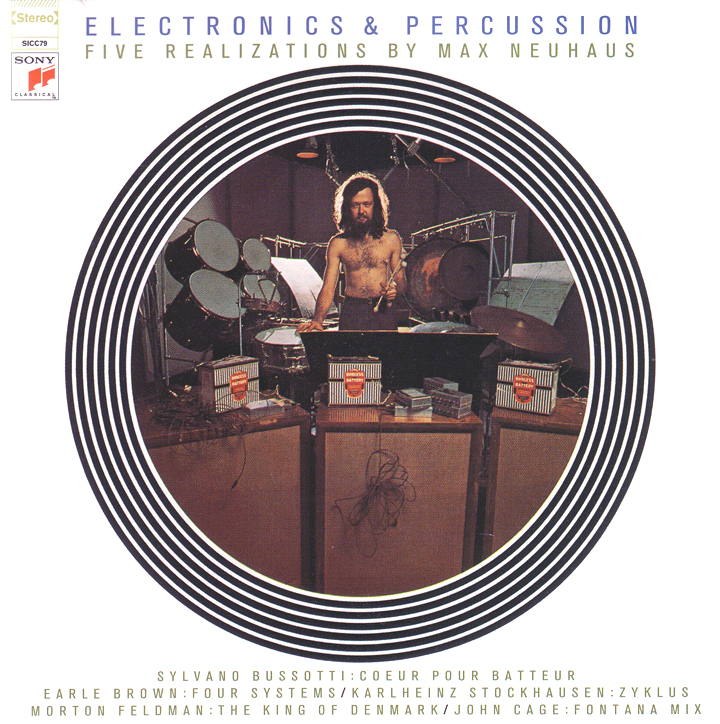1964
The King of Denmark by Morton Feldman, 1964

Image Max Neuhaus performing, Carnagie Recital Hall, New York City, December 1, 1966
-Earle Brown: Four Systems - For Four Amplified Cymbals
-Morton Feldman: The King of Denmark
-Sylvano Bussotti: Coeur Pour Batteur - Positively Yes
-Karlheinz Stockhausen: Nr. 9 Zyklus for One Percussionist
-John Cage: Fontana Mix - Feed

1968 recording Electronics & Percussion: Five Realizations by Max Neuhaus, an LP that reveals Neuhaus as an artist exploring the boundaries separating the roles of performer, collaborator, and creator.
When the Listener is Composer.
Morton Feldman, The King of Denmark (Realization date, 1964)
Max Neuhaus performing The King of Denmark, Carnagie Recital Hall, New York City, December 1, 1966
Max Neuhaus, Morton Feldman, The King of Denmark ~9:00. Aspen Magazine, New York City, November 6, 1967
LP: Columbia Records Studios, New York City, June 1968
'The piece was written for me to premier at the New York Avant Garde festival in the fall of 1964. Feldman and I had several meetings at my studio on East Tenth Street over the previous summer. He wanted to hear my instruments and explore techniques. With Morty, at that time, it was always about finding ways to play more softly.
In the second or third session, he was still insisting, 'no, it's too loud, too loud'. I suddenly remembered how, as percussion students, we used to practice our parts on stage just before a concert started. In order that the audience not hear us, we used our fingers instead of sticks. I put down my sticks and started to play with just my fingers. Morty was dumbstruck, 'that's it, that's it!' he yelled.
This work is played throughout only with the fingers. Like most of Feldman's music, it is extremely soft and without attacks. The score specifies the relative pitch of each note (high, medium or low), its relative time, and in some cases the specific instruments.
Much of Feldman's music, because it is so soft, has the effect of putting a magnifying glass on that area of dynamic between pianissimo and piano – we find all sorts of things we never saw before. Because of the extremely quiet nature of this piece, much of it can only be heard (at least, in one sense of the word) on a recording'.
Max Neuhaus